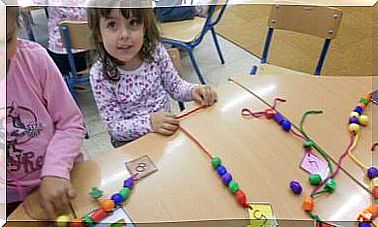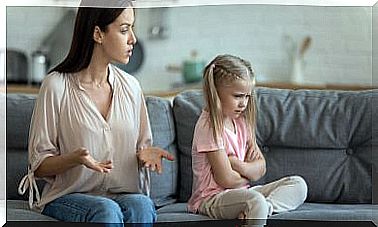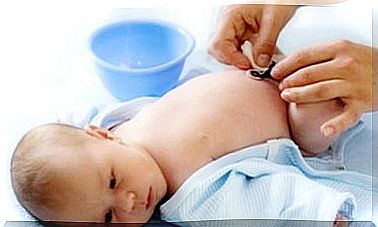Cystic Fibrosis In Children

Cystic fibrosis in children is one of those conditions that every parent, or anyone planning to become a parent, should be aware of. This is due to its characteristics that make it difficult to infer that something is wrong when the condition is completely unknown.
If the symptoms of cystic fibrosis are ignored they can cause unfavorable situations in the child. Some cases are even fatal.
What is cystic fibrosis?
Cystic fibrosis is a chronic inherited disease with autosomal recessive dominance. This means that a father can inherit from his son the gene that carries the aforementioned disease; even without the parent having suffered it.
Also, cystic fibrosis in children is a serious disease that can cause death early in life if it is unknown or pauses to cope with it are unknown.
Children with cystic fibrosis have an abnormal functioning of the processes and cells involved in the production of:
- Sweat.
- Mucus.
- Mucus, for example, in the respiratory area and gastric juices in the digestive system.
- Gastric juices.
Cystic fibrosis in children alters the nature of mucus, gastric juices, and so on, which serve as lubricants or nutrient breakers; the condition makes them thick and sticky.
This implies that a common cold, where the fluid in the mucus allows the body to remove bacteria from the lungs and respiratory passages, in the case of cystic fibrosis it becomes a problem of enormous gravity as it has the potential to thicken and obstruct the ducts. respiratory

Other complications
When the respiratory or digestive tracts become blocked, various complications arise, but this is not the only way in which the disease represents a danger. Even if the mucus layer has become thicker in the intestines or in the lungs it has become thinner, it contains germs that are normally excreted from the body by one process or another of the body.
In the case of cystic fibrosis in children, they can reproduce in fluids that thicken, causing nests of infection within the body that can become quite serious, so much so that in severe cases a lung transplant may be required for , whoever someone who suffers from this affectation survives.
Treatment
Unfortunately, a cure for cystic fibrosis has not yet been developed, so the treatments and practices to cope with this disease are preventive in nature.
Until a few decades ago, children born with cystic fibrosis had an average life expectancy of just 6 months. With the enormous evolution of health technologies and processes, as well as the knowledge of this disease, in countries with a very high development index, life expectancy can be around 50 years on average.
With what has been described, cystic fibrosis in children requires disciplined daily care, in view of avoiding at all costs the contagion of any disease that involves sensitization and excretion of mucus.
The treatment of cystic fibrosis, in addition to the de facto precautionary measures regarding contagion, incorporates the use of vaccines, antibiotics, as well as drugs to open the airways or mucus softeners.

Screening for cystic fibrosis in children
The best way to detect it is to go to your medical center for an IRT or sweat chloride test. However, it is important to pay attention to whether the child exhibits the following symptoms.
- Salty taste of the skin.
- Recurrent pneumonia events.
- Long time between bowel movements (24 to 48 hours).
- Abnormal difficulty gaining weight
- Strong abdominal pain when there is constipation.
- Cough with noticeable increase in mucus in the paranasal sinuses.
- Stools with traces of mucus, that float or that maintain an abnormal pale color.
Keep in mind that even when the following symptoms are noted, cystic fibrosis in children is not conclusive. Remember that the diagnosis can only be made by a doctor.
Cystic fibrosis image courtesy of: © La Clínica EUGIN










